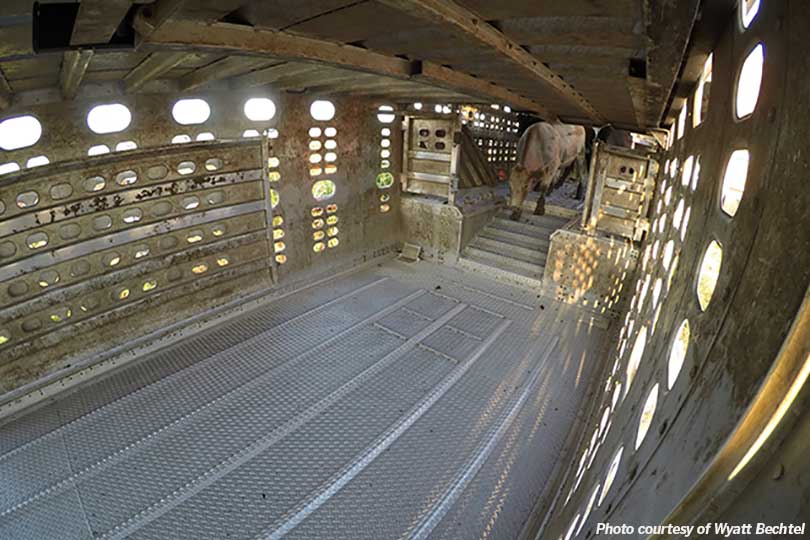Finished cattle are bigger and that’s causing a product quality issue, along with an industry-wide loss of an estimated $35 million due to carcass trim of bruised muscle on strip loins, according to Drovers.
The issue is that cattle have outgrown the trailers, according to research by Kansas State University (KSU).
The study shows carcass bruising is likely due to the lack of adequate clearance inside most cattle trailers, specifically when they enter or exit the belly compartment of cattle transportation trailers.
“Our study showed that bruising occurred in 68 percent of carcasses,” said Tiffany Lee, KSU veterinarian and PhD candidate. “A total of 11,419 bruises were observed in 10,308 carcasses, indicating that a number of carcasses had multiple bruises. The number of carcasses observed with no bruise was 3,123 of the 10,308.”
Most cattle trailers on the road today, according to Drovers, have 56 inches of clearance through the gate into the belly. Once there, they have about 69 inches of clearance.
“Cattle today are just bigger,” said Dan Thomson, KSU veterinarian and an industry leader in animal care and beef cattle production.
Thomson noted improved genetics have played a role in more frame and more feed efficiency, and cattle are being fed to heavier-end points.
During the KSU study, trained observers visited three packing plants to record all potential bruising events occurring as cattle exited the trailer and the prevalence and location of carcass bruises.
The problem is costly—about $35 million to the strip loin alone.
“That strip loin becomes devalued because if we trim it, we sell it as a No. 2 strip loin. Overall, trimming the strip loin is a $75 loss to the packer,” Casey Mabry, alliance manager for Cargill, told Drovers.
Bruising on other cuts leads to increased industry-wide losses.
Packers, truckers, feedyard managers and other leaders in the cattle industry are working together to find a solution.
Trucking companies and trailer manufacturers are starting to redesign and modify trailers to minimize carcass bruising and respond to the demand of the beef industry.

